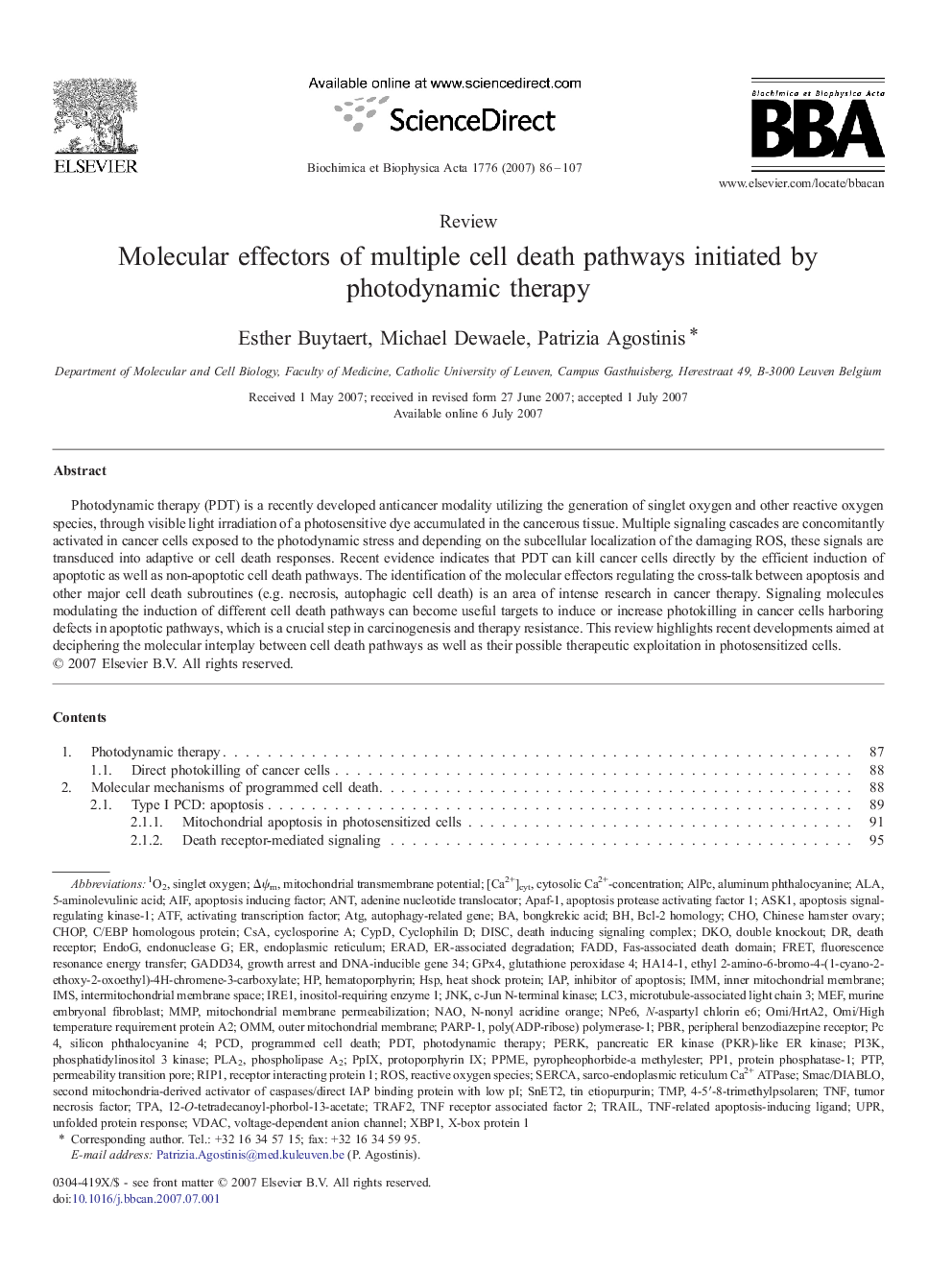| Article ID | Journal | Published Year | Pages | File Type |
|---|---|---|---|---|
| 10895643 | Biochimica et Biophysica Acta (BBA) - Reviews on Cancer | 2007 | 22 Pages |
Abstract
Photodynamic therapy (PDT) is a recently developed anticancer modality utilizing the generation of singlet oxygen and other reactive oxygen species, through visible light irradiation of a photosensitive dye accumulated in the cancerous tissue. Multiple signaling cascades are concomitantly activated in cancer cells exposed to the photodynamic stress and depending on the subcellular localization of the damaging ROS, these signals are transduced into adaptive or cell death responses. Recent evidence indicates that PDT can kill cancer cells directly by the efficient induction of apoptotic as well as non-apoptotic cell death pathways. The identification of the molecular effectors regulating the cross-talk between apoptosis and other major cell death subroutines (e.g. necrosis, autophagic cell death) is an area of intense research in cancer therapy. Signaling molecules modulating the induction of different cell death pathways can become useful targets to induce or increase photokilling in cancer cells harboring defects in apoptotic pathways, which is a crucial step in carcinogenesis and therapy resistance. This review highlights recent developments aimed at deciphering the molecular interplay between cell death pathways as well as their possible therapeutic exploitation in photosensitized cells.
Keywords
PI3KMMPJnkPARP-1IMSPPIXMEFERADTMPtPAPBRPDTATFANTALAPTPHspDKOΔΨmUPRATGIRE1XBP1LC3IAPAPAf-1DISCFADDVDACASK1TRAF2PLA2PCDGADD34Cyclophilin DPP1RIP1CypD1O2GPx4Endonuclease GOMMHA14-1NPe6TNFsecond mitochondria-derived activator of caspases/direct IAP binding protein with low PIPPME12-O-tetradecanoyl-phorbol-13-acetateTNF receptor associated factor 2sarco-endoplasmic reticulum Ca2+ ATPaseSnET25-Aminolevulinic acidC/EBP homologous proteinc-Jun N-terminal kinaseROS[Ca2+]cytAluminum phthalocyaninephospholipase A2inositol-requiring enzyme 1AIFSmac/DIABLOBongkrekic acidPermeability transition poreFluorescence resonance energy transferFRETimmSinglet oxygenCSAChoER-Associated DegradationChinese Hamster Ovaryadenine nucleotide translocatorCHOPEndoGFas-associated death domainPhotodynamic therapyinner mitochondrial membraneCyclosporine Aendoplasmic reticulumapoptosis inducing factorouter mitochondrial membranetumor necrosis factorphosphatidylinositol 3 kinaseactivating transcription factorTRAILSERCATNF-related apoptosis-inducing ligandProgrammed cell deathdeath inducing signaling complexinhibitor of apoptosisdouble knockoutMitochondrial membrane permeabilizationNAOHematoporphyrinBcl-2 homologyUnfolded protein responseMitochondrial transmembrane potentialHeat shock proteinprotein phosphatase-1receptor interacting protein 1protoporphyrin IXPERKPoly(ADP-ribose) polymerase-1autophagy-related genePc 4voltage-dependent anion channelApoptosis signal-regulating kinase-1glutathione peroxidase 4Reactive oxygen speciesperipheral benzodiazepine receptordeath receptor
Related Topics
Life Sciences
Biochemistry, Genetics and Molecular Biology
Cancer Research
Authors
Esther Buytaert, Michael Dewaele, Patrizia Agostinis,
